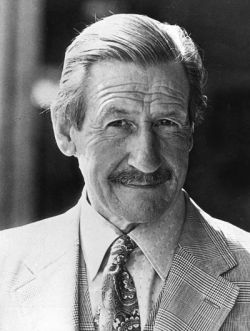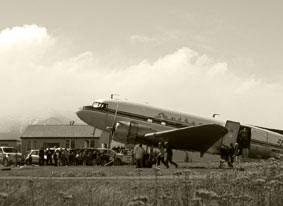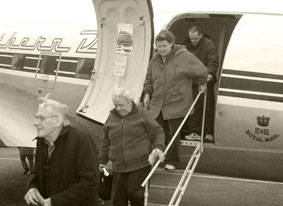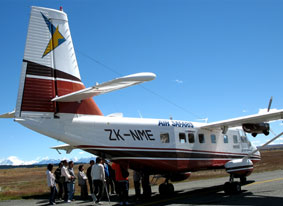 Pukaki Airport owes its existence to the vision of aviator Sir Harry Wigley (1913-1980).
Pukaki Airport owes its existence to the vision of aviator Sir Harry Wigley (1913-1980).
A former RNZAF pilot who served in the Pacific; Harry, the son of Mount Cook Group founder Rodolph Wigley, helped to pioneer motor vehicle access to the hermitage at Mt Cook airport. Harry would often fly light aircraft within the Mackenzie basin, using these for fishing and hunting trips.
In the early 1950’s Harry experimented with fitting retractable skis to his Auster aircraft, and carried out the first snow landing on 22 September 1955. Further flights were made the same day carrying several passengers including Sir Edmund Hillary. The aircraft in question is displayed at the Sir Edmund Hillary Centre at Mt Cook Village.
Harry further foresaw a need for a commercial air link to Mackenzie and Mt Cook. A license was duly obtained to run a scheduled service from Christchurch to Mt Cook and Queenstown using a Douglas DC3 aircraft purchased from National Airways Corporation (NAC). Although there were existing light airfields in the region, these were either unsuitable for the DC3, or had obstructions. Harry realised that an alternative airstrip was required in the Mackenzie Basin in addition to the existing Mt Cook airstrip.

A grass strip already existed near Glencairn station on the south side of Ohau River, though this would disappear with the 1970s-1980s development of the Ohau C canal.
A grass air strip, now the location of Pukaki Airport, was laid out on Ben Ohau station, adjacent to Twizel. When ascertaining an ideal location and direction, Harry and run holder Jack Cameron surveyed the site by placing a stake in the ground, travelling one mile straight in his Chevrolet Bel-Air, placing the other stake in at the one mile mark.
Over time the runway was sealed, and basic facilities were established. Until the late 1980s the airfield was exclusively used by Mount Cook Airlines aircraft, by this time operating Hawker Siddley 748 aircraft. The Upper Waitaki Aero Club set up an area on site, though later shifted their operations to Omarama.
In the late 1980s Mackenzie District Council became involved in the airfield operations. At the requests of the Twizel Community Board to Council, other operators were allowed access, provided permission was gained. A report commissioned by a Captain Smith – ‘The Smith Report’ – concluded that if a public airfield were established in the area, it should be at Pukaki.

It was at this time that Lands and Survey offered the airfield land for sale. This was duly purchased by Mackenzie District Council, remaining in ownership since.
In the 1990s, an application to fly helicopters from Ferintosh Station on Mt Cook Road encouraged Council to look closer at aviation operations in the Mackenzie Basin.
An alternative airfield to the Mt Cook strip had resulted in a new runway at Glentanner developed by a competitor to Mt Cook Airlines, other airstrips in the area being in private or company hands.
Seeing that a number of unauthorised helicopter landings were taking place throughout the Mackenzie Basin, Council developed an Aviation Strategy, focusing on Pukaki Airfield becoming an ‘open’ public airfield, and identifying a number of ‘sub level’ helicopter sites.
By the early 2000s, due to tenure review, land surrounding the Pukaki Airfield was offered for sale.

In 2003 the Mackenzie District Council concluded the purchase of 220 hectares of land, at a cost of $480,000, further establishing a company Mackenzie Holdings Ltd, to develop the airfield and the surrounding area for hangars and facilities – thereby turning the airfield into an airport.
Over the 2000s and 2010s a subdivision, named after Sir Harry Wigley, was developed adjacent to the airfield, the roads bearing the names of the aircraft types that he used. The subdivision is home to the airport’s operations, and several aviation related businesses.

